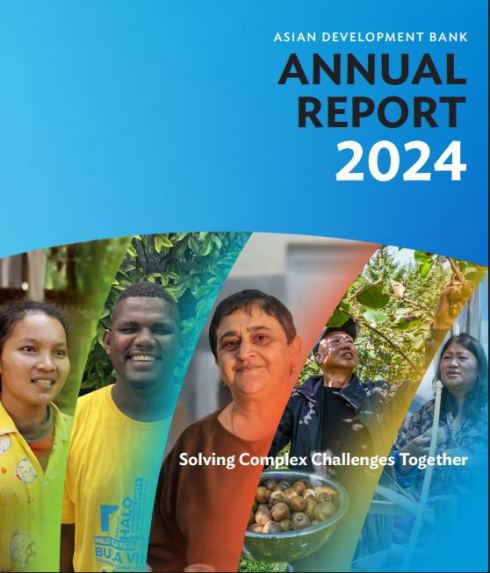
The Asian Development Bank (ADB) committed US$24.3 billion from its own resources in 2024, coupled with US$14.9 billion in cofinancing in collaboration with its partners, to help Asia and the Pacific solve a range of complex development challenges.
ADB’s financial and operational results were published on April 24 in its Annual Report 2024. The report summarizes how ADB supported its developing member countries (DMCs) to make progress toward sustainable, inclusive, and resilient development.
“With our increased financial firepower and a sharper strategic focus, ADB is turning commitment into concrete results,” said ADB President Masato Kanda. “We are financing more affordable and efficient energy and transport systems, supporting a vibrant private sector that creates better-quality jobs, and strengthening basic services in education, health, and social protection. Together with our partners, we are building a brighter future for the next generation in Asia and the Pacific.”
The US$24.3 billion comprised loans, grants, equity investments, guarantees, and technical assistance provided to governments and the private sector.
To build on the 1 million direct jobs it generated in 2024, ADB committed US$4.8 billion through its private sector projects and programs—up 28.5% from 2023. Collaborations with governments, financial institutions, and investors supported enabling business environments, deepened capital markets, and increased trade.
The report documents ADB’s evolution towards becoming a bigger, better, and more effective development bank. Milestones include capital management reforms that will enable ADB to expand its operations by 50% over the next decade, a major update to the institution’s corporate strategy, and a record US$5 billion replenishment for the Asian Development Fund, ADB’s largest source of grant financing for operations in its poorest and most vulnerable DMCs.
ADB also deployed a range of financial and knowledge support during the year to create more productive and resilient food production systems, reduce the damaging impacts of extreme weather events, and to reverse environmental degradation and biodiversity loss.
ADB assisted DMCs to implement critical reforms to improve public financial management, address fiscal risks, and promote social and economic development through better domestic resource mobilization and budgeting.
The report notes that in 2024, most of ADB’s developing member countries across Central and West Asia experienced solid economic growth driven by better-than-expected domestic demand, increased manufacturing, growth in services and construction, higher remittances, and easing inflation.
According to the report, Georgia and Tajikistan were among the region’s best performing economies, with Georgia benefiting from steady growth in tourism, industry, and agriculture while rising remittances bolstered Tajikistan’s growth.
Despite its economic performance, Central and West Asia still faces significant development disparities and persistent social welfare challenges. The region’s young and growing population presents both opportunities and challenges. Many youth continue to face barriers to quality education and employment, underscoring the need for investments in human capital. Climate change, meanwhile, has exacerbated the region’s vulnerabilities to extreme weather events such as severe heat waves, lingering droughts, and devastating floods.
In 2024, ADB sought to expand access to essential services for poor and vulnerable people across Central and West Asia. This included investments to support those living under humanitarian crises and to reinforce social protection systems. The bank also financed maternal and child health care facilities and services, along with advanced education initiatives, to help marginalized communities.
To identify investment priorities, ADB initiated studies of transboundary watersheds across Azerbaijan, the Kyrgyz Republic, Tajikistan, and Uzbekistan.




